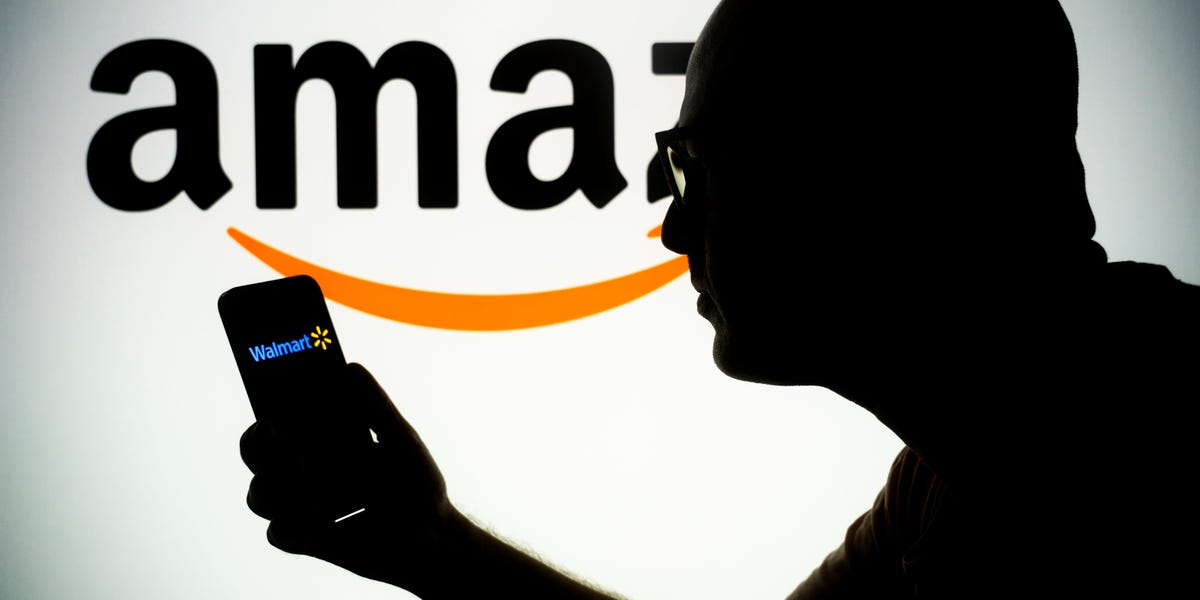Walmart last week announced its $2.3 billion acquisition of Vizio and its SmartCast Operating System in a move that widens its advertising reach amid an ongoing battle with Amazon to get the most eyes on its products through ads displayed in streaming content.
The Vizio acquisition is in line with Walmart’s aggressive moves to bolster its advertising business, which the company reported in its Q4 earnings statement grew about 28% to reach $3.4 billion over the last year.
“Walmart has entered Amazon and Best Buy’s ecosystem of users through the purchase of Vizio — a strategic move that will not only increase Walmart’s inventory supply but also boost e-commerce sales for the company,” Forbes reported David Zapletal, Chief Operating Officer at the marketing firm Digital Remedy said of the Vizio deal.
Representatives for Walmart and Amazon did not respond to requests for comment from Business Insider.
How Walmart competes — on TV
Vizio creates smart televisions and sound bars, and its SmartCast system grants users access to third-party streaming apps like Disney+ and Hulu, akin to a software version of Amazon’s FireStick. Ads can then be displayed through the operating system, and customer insights can be gleaned via its automatic content recognition (ACR) systems, which log what type of content users browse to better deliver targeted ads.
“This ACR data provides very powerful targeting capabilities —which Amazon doesn’t have at Vizio’s scale — for Walmart Connect to compete with some of the other companies out there,” Kenneth Suh, the Chief Strategy Officer of the ad tech platform Nexxen, told AdWeek.
The acquisition positions Walmart to embed itself directly into consumers’ homes with its advertisements, allowing the company to reach new customers and gain deeper insights into their media consumption habits, which should, in turn, grow its commerce sales.
Walmart currently sells ad space to suppliers on its internal site and app and conducts ad campaigns through promoted posts on external social media sites. Though the company also purchases streaming and television advertisements, the Vizio acquisition will greatly decrease the cost of such campaigns by presenting ads through the newly Walmart-owned platform rather than purchasing space from third parties.
“Walmart’s consumer reach could propel Vizio’s ad business to eventually rival Samsung and Roku. If that happens, and it’s not clear that it will, then Walmart-Vizio could become a top five CTV ad seller in the US, and eventually, globally,” AdWeek reported Ross Benes, an Insider Intelligence analyst, said.
While Walmart’s ad business is still a fraction of Amazon’s — Amazon reported its ad services grew 27% in the fourth quarter, hitting $46 billion in total revenue for 2023 — the brick-and-mortar chain of stores continues to lead the way in day-to-day grocery sales. It also reports higher revenue than the online retail giant.
In Q4, which included the holiday shopping season for both companies, Walmart reported $173.4 billion in revenue, compared to Amazon’s reported $169.96 billion.
“Selling a book or a TV is great and super helpful,” the CEO of Amazon’s Worldwide Stores, Doug Herrington, told Fortune, noting Amazon’s strengths in large or irregular purchases, and comparing them with Walmart’s advantage in daily grocery sales, saying: “How many times do I buy a book or TV each week versus how many times do I buy a packaged goods item, or some toilet paper or some food?”
The Vizio acquisition, which is still subject to regulatory approval before completion, will position Walmart to capitalize on the trend of retailers using targeted ads to attract prospective customers browsing other websites and potentially widen the revenue gap between the competing retailers.
With 18 million active user accounts, per the Walmart press release announcing the deal, Vizio’s existing platform will allow Walmart to place its own targeted ads — as well as sell ads from its suppliers — in front of the eyes of millions of potential customers who watch movies and television shows on its new platform.
Amazon in January announced its plan to charge Prime members $2.99 each month to keep their streaming content ad-free, in addition to its base subscription fees.
“There is a lot to be excited about with this acquisition,” Seth Dallaire, executive vice president and chief revenue officer of Walmart US, said in the press release about the Vizio deal. “We believe the combination of these two businesses would be impactful as we redefine the intersection of retail and entertainment.”
Read the full article here





